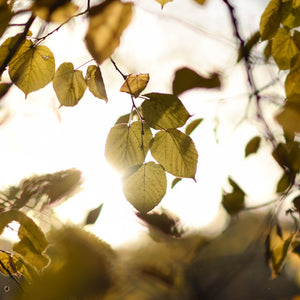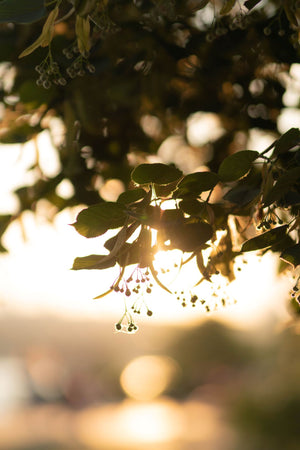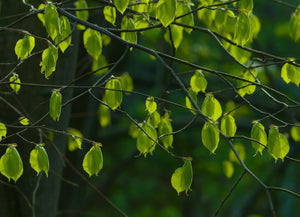The Linden Guide
Linden trees offer a majestic and timeless presence in any landscape. With their stately stature, distinctive foliage, and fragrant blossoms, linden trees command attention and add a touch of grandeur to gardens and outdoor spaces. These magnificent trees are known for their adaptability and can thrive in various conditions with proper care and maintenance. Whether you seek to create a tranquil woodland retreat or desire a standout feature in your garden, linden trees are an excellent choice.

About
Linden trees, belonging to the Tilia genus, comprise a diverse group of deciduous trees known for their remarkable presence and ecological significance. With over 30 recognized species, linden trees are widely distributed throughout the temperate regions of the Northern Hemisphere, encompassing North America, Europe, and Asia. These magnificent trees are characterized by their distinctive features and their essential role in supporting local ecosystems.
A striking feature of linden trees is their smooth, grayish bark, which provides an eye-catching contrast against their lush foliage. Linden leaves are typically heart-shaped and serrated at the edges, exhibiting vibrant shades of green during the growing season. As summer wanes and autumn approaches, linden trees undergo a transformation, showcasing a spectacular array of warm colors, including hues of yellow, orange, and copper.
Linden trees are renowned for their ecological importance, providing sustenance and refuge for a diverse array of wildlife. Their fragrant flowers, arranged in clusters, attract pollinators such as bees and other beneficial insects during the spring. Furthermore, the seeds enclosed within distinctive, winged bracts serve as a valuable food source for numerous bird species and mammals.
These adaptable trees can thrive in a variety of soil types and environmental conditions. While they prefer moist, well-drained soil, linden trees can flourish in both full sun and partial shade. Their ability to endure diverse climatic conditions, coupled with their moderate growth rate, makes them an excellent choice for a wide range of landscaping projects.
Whether utilized as a striking centerpiece in a garden, planted in groups to create windbreaks, or incorporated into mixed borders, linden trees impart an air of elegance and beauty to any landscape. Notable species of linden trees include the Littleleaf Linden (Tilia cordata) and the American Linden (Tilia americana), both celebrated for their splendid appearance and significant ecological contributions.
Through the selection and attentive care of linden trees in your landscape, you not only enhance the aesthetic appeal of your outdoor space but also actively contribute to the preservation of these remarkable trees and the biodiversity they support.

Planting
Linden trees have specific planting and care requirements to ensure their successful establishment and growth. Here are some general guidelines for planting and caring for linden trees:
Soil: Linden trees thrive in well-draining soil rich in organic matter. They prefer slightly acidic soil with a pH between 6.0 and 7.0. Prepare the planting site by loosening the soil and incorporating compost or organic matter to enhance drainage and fertility.
Sunlight: Linden trees prefer full sun to partial shade. When planting, choose a location that receives at least six hours of direct sunlight daily. However, linden trees can tolerate some shade, especially in hot and arid climates.
Watering: Adequate watering is essential, especially during the initial establishment of linden trees. After planting, water deeply to help the tree settle and establish its root system. Throughout the first year, maintain regular irrigation. Water deeply and thoroughly once or twice a week, adjusting based on rainfall and soil moisture levels. Avoid overwatering to prevent root rot.
Mulching: To conserve moisture, suppress weed growth, and regulate soil temperature, apply a layer of organic mulch around the base of your linden tree. You can use materials like wood chips, bark, or compost. Ensure the mulch is a few inches away from the tree trunk to prevent moisture accumulation.
Pruning: Linden trees typically require minimal pruning. Focus on removing any dead, damaged, or crossing branches to maintain a strong and balanced structure. Pruning is best done during late winter or early spring while the tree is dormant and before new growth emerges.
By adhering to these fundamental planting and care guidelines, you can ensure the successful establishment and healthy growth of your linden trees. This will enable them to thrive and enhance the beauty of your landscape for many years to come.

Care
Linden trees require specific care to ensure their optimal growth and health. Here are some general guidelines for the care of linden trees:
Watering: During the growing season, provide moderate watering to your linden trees. Aim for about one inch of water per week, adjusting as needed based on rainfall. It's important to water deeply and thoroughly to promote deep root growth. Avoid shallow watering, which can lead to stress and dehydration. In periods of drought or high temperatures, additional watering may be necessary to keep the soil adequately moist.
Pruning: Linden trees typically do not require extensive pruning. However, it's advisable to remove any dead or damaged branches to maintain the tree's overall health and appearance. You may also shape the tree to achieve the desired size and form. Prune during late winter or early spring before new growth emerges. Use clean, sharp pruning tools to minimize the risk of damaging the tree. Deadheading spent flowers can also encourage new growth and potentially trigger a second blooming.
Fertilizing: Fertilizing can promote healthy growth and flowering in linden trees. Apply a balanced, slow-release fertilizer in the spring or early summer, following the recommended application rates and timing provided by the manufacturer. Avoid over-fertilizing, as it can harm the tree's roots. When in doubt, it's better to err on the side of caution and use less fertilizer.
Soil and Sunlight: Linden trees prefer well-drained, moist soil and thrive in full sun exposure. Although they are relatively tolerant of different soil types, providing well-draining soil is essential for their optimal growth. Additionally, mulching around the base of the tree helps retain moisture and regulate soil temperature.
Pests and Diseases: While linden trees are generally resistant to pests and diseases, it's important to keep an eye out for common issues such as aphids or leafhoppers. If you observe any signs of damage or disease, promptly treat the tree with appropriate insecticides or fungicides.
By following these basic care guidelines, your linden trees will thrive, providing beauty, shade, and a majestic presence in your garden for years to come.

How To Use
Linden trees are a versatile and valuable addition to your landscape. Here are some recommendations based on their characteristics to help you make the most of these remarkable trees:
Focal Point: Lindens possess a remarkable presence that makes them a perfect choice as a focal point in your landscape. Consider planting a single linden tree in an open area to showcase its graceful form and distinctive foliage. Alternatively, you can create a stunning visual impact by planting a group of linden trees together, forming an inviting focal area.
Shade Tree: With their broad, dense canopies, linden trees provide excellent shade. Strategically plant them near outdoor seating areas, patios, or decks to create a cool and comfortable space where you can relax and enjoy the outdoors, shielded from the sun's rays.
Windbreak: Lindens, with their sturdy growth and dense foliage, can effectively serve as a windbreak. Plant them in a row to shield your garden or home from strong winds, providing a natural barrier and protection against the elements.
Privacy Screen: Take advantage of the dense foliage of linden trees to create a natural privacy screen in your landscape. Plant them in a row along your property line to establish an attractive and functional barrier that enhances both privacy and aesthetics, allowing you to enjoy your outdoor space in seclusion.
Wildlife Habitat: Lindens contribute to the overall biodiversity of your garden by attracting various wildlife species. Birds and other animals are drawn to the nectar-rich flowers and the shelter provided by linden trees. By planting linden trees, you can create a welcoming habitat and enjoy the sight and sounds of wildlife flourishing in your outdoor space.
When selecting linden trees for your landscape, consider their growth rate and environmental requirements. Ensure they are planted in areas that receive full sun or partial shade, and provide well-drained soil. With their graceful form, lush foliage, and the functional benefits they offer, linden trees are an exceptional addition that will enhance the beauty and functionality of your outdoor environment.
Conclusion
Linden trees are a captivating and versatile addition to any landscape. Their remarkable presence, unique foliage, and ecological significance make them a sought-after choice for various settings. By adhering to proper planting and care practices, you can enjoy the beauty and benefits of linden trees in multiple ways, whether it's creating a picturesque driveway or providing a cool retreat in your backyard. Whether you choose to showcase their elegance as a focal point or incorporate them into a larger design, linden trees offer endless possibilities to enhance the allure of your outdoor space. With dedication and care, you can create a breathtaking landscape that will bring you lasting joy for years to come.






